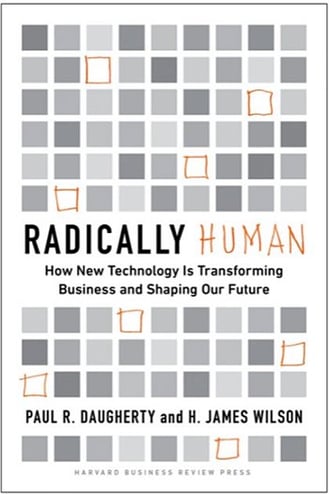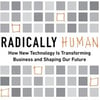Companies that thrived, rather than merely survived, during the pandemic know that maintaining a rigid division between technologists and nontechnical people underuses the most radically human and readily available resource of all: their talent.
They take three bold steps to unlock the full potential of their people + radically human technology, taking differentiation on talent to a new level of distinctiveness:
- They democratize technology by putting it in the hands of employees of all kinds at all levels.
- They invest in innovative technology-skilling programs to take their people beyond digital literacy to digital fluency.
- They leverage the combination of democratized technology and a culture of digital fluency to enable productivity from anywhere at a time when, how, and where work gets done is undergoing a massive shift.
Democratizing Technology
Equality among employees is about diversity, inclusion, and equal access to opportunities, including technology, to do their jobs better and to innovate. In a survey of more than 30,000 employees, we found that an “innovation mindset”—an individual’s willingness and ability to be innovative at work—is six times higher in the most-equal cultures than in the least-equal ones.1
 Technology democratization ensures that as many of your people as possible are empowered to become drivers of change, igniting grassroots innovation by equipping every employee with the tools and skills to build technology solutions at the point of need.
Technology democratization ensures that as many of your people as possible are empowered to become drivers of change, igniting grassroots innovation by equipping every employee with the tools and skills to build technology solutions at the point of need.
Takeda, a global biopharmaceutical leader, is empowering its people to focus on higher-value activities, supporting better patient outcomes by scaling automation throughout the company. The company has trained over 2,200 people and democratized the development of over 500 bots.2
Democratization also means democratizing talent. It’s not enough to put intelligent technologies in the hands of a workforce that isn’t diverse and inclusive. Many organizations are falling short, partly because only 28 percent of the science and engineering workforce is female, and only 2.5 percent is composed of Black women.3
When access to powerful technology spreads throughout an organization, every employee can be an active and vital part of digital transformation. People can decide for themselves what to automate, allowing them to focus on the things they do—and like doing—best. They can help to improve both the customer and the employee experience—not by gathering feedback to send to a team of tech experts for consideration, but by putting technology to work themselves.
From Digital Literacy to Digital Fluency
At a basic level, employees need digital literacy—an elementary understanding of what technologies are at their disposal and how they work. Traditionally, companies have settled for digital literacy through traditional in-classroom or online training. But fostering basic literacy alone has resulted in uneven adoption, understanding, and utilization of digital capabilities. Moreover, the impact of the pandemic has forced a shift in demand from digital literacy to digital fluency—immersion in the language, techniques, and application of intelligent technologies.
Achieving digital fluency requires a genuine belief in employees’ abilities and an investment to match. That is the logic of the radically human. It’s also a lesson in how to genuinely differentiate an organization on the dimension of talent in an age of radically human technology.
Capitalizing on humans + radically human technologies to differentiate your organization on the dimension of talent is a moving target. Best practices are still evolving. But one thing is certain: waiting to act isn’t an option. You will need to constantly experiment with new solutions, thinking beyond traditional HR categories and taking some concrete steps to democratize technology, build a digitally fluent culture, and achieve productivity anywhere.
Productivity Anywhere
The year 2020 saw the biggest workforce and workplace transformation in living memory. To keep employees safe during the pandemic, companies allowed legions of their people to work from home. To keep the business functioning and employees productive, companies doubled down on technology solutions. Almost overnight, billions of people around the world changed their mode of working.
When people can work from anywhere, they can do their jobs in different or even brand-new ways that will outlast the pandemic. For instance, at the University of Liverpool, scientists worked with a robot chemist to continue their research during lockdowns.4 The robot found ways to speed up reactions inside solar cells and could run experiments autonomously, even when no one was present. The researchers won’t stop using these robots just because they can go back into the lab themselves. They’ll expand what they can do, like running experiments 24/7, or having robots handle toxic substances.
Businesses must accommodate rather than fight this new reality. They need to toss out convention and reimagine how their workforce model can best support and enable their people to be more productive—how remote employees and on-premises employees collaborate, what work is better done in which locations, and what the purpose of physical offices will become.
|
Related article: How Artificial Intelligence is Driving Digital Transformation By Paul Daugherty and Jim Wilson |
Getting Started
To begin democratizing technology, evaluate your existing access to technology. Identify what tools you may already have access to, or what additional investments need to be made, to power grassroots innovation. Then pick one area of the enterprise and experiment.
To democratize talent, use the career-enhancing promise of democratized technology and the flexibility of productivity anywhere to create a powerfully differentiated employer brand that attracts diverse employees. To fully harness the powerful logic of radically human technology—that it is humans who confer technological leadership—invest in digital fluency programs across your organization.
For the dawning age of productivity anywhere, identify where you have made rapid, pandemic-driven digital transformations; address any security concerns; and consider how you can make hybrid models seamless and sustainable. Remember, you are undertaking one of the most massive workforce experiments since the dawn of the industrial era. Invest in workplace analytics tools, and develop a set of key performance indicators to gain a deeper understanding of how employees are responding to remote work.
1Julie Sweet and Ellyn Shook, “The Hidden Value of Culture Makers,” Accenture, 2020, https://www.accenture.com/ie-en/about /inclusion-diversity/acnmedia/Thought-Leadership-Assets/PDF-3/Accenture-Getting-To-Equal-2020-Research-Report-IE.pdf
2 “Why LexisNexis Is ‘in Awe’ of Automation Hub and Task Capture,” UiPath, 2020, https://www.uipath .com/resources/automation-case-studies/lexisnexis-risk-solutions-rpa.
3 “Statistics,” National Girls Collaborative Project, 2021, https://ngcproject.org/statistics.
4 Victoria Gill, “Robotic Scientists Will ‘Speed Up Discovery,’ ” BBC News, July 6, 2020, https://www.bbc.com/news/science-environment -53029854.

Written by Paul Daugherty, Jim Wilson and Christie Smith
Paul R. Daugherty and H. James (Jim) Wilson and are co-authors of Radically Human: How New Technology is Transforming Business and Shaping Our Future (HBR Press, 2022), and Human + Machine: Reimagining Work in the Age of AI (HBR Press, 2018). Daugherty is Group Chief Executive – Technology and Chief Technology Officer at Accenture. Wilson is Global Managing Director of Thought Leadership and Technology Research at Accenture. Christie Smith is global lead, Talent & Organization/Human Potential at Accenture, and was a contributor to Radically Human.



